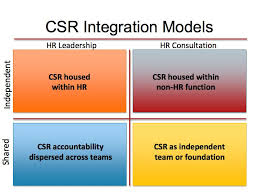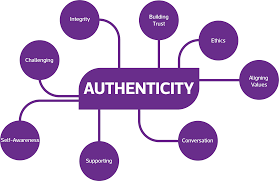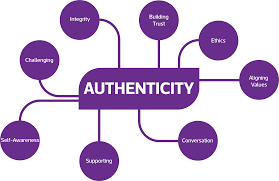
East Africa’s Great Rift Valley
Order Instructions:
JOURNAL ARTICLE 2 REVIEW INSTRUCTIONS
Articles
Write a formal review on this online article:
“East Africa’s Great Rift Valley: A Complex Rift System” by James Wood and Alex Guth at http://geology.com/articles/east-africa-rift.shtml.
Content
In general, the Journal Article Review must contain an introductory paragraph, the body of the work, and a conclusion. In terms of the body, the following items must be discussed:
1. Brief overview of the theme of the article and its main points.
2. Strengths of the article. Answer questions such as:
a. What did the author do well?
b. Were any points made exceptionally clear?
c. Did the author write with concision and precision?
3. Weaknesses of the article. Answer questions such as:
a. What erroneous assumptions does the author make, if any?
b. Are any factual errors made in the article?
c. Is the scientific method violated in any way?
d. Could the author have stated his/her case better?
4. Remember, every article has weaknesses. You are expected to discuss some of these. Failure to identify any weaknesses in your Journal Article Reviews will negatively affect your grade.
Outline
Use the following outline when writing your papers. Each point on the below outline must be a separate section (with a section heading) within each of your Journal Article Reviews. You will notice that these section headings correspond to the content points above.
I. Introduction
II. Brief Overview and Main Points
III. Article Strengths
IV. Article Weaknesses
V. Conclusion
Length
These reviews are to be 2–3 pages each. Do not exceed this page limit. The title page and bibliography do not count toward this page total.
Format
You must use current APA formatting. Papers must be double-spaced with 1-inch margins all around. The font is to be Courier New or Times New Roman, 12-point. Include a cover sheet with your name, instructor’s name, course number and title, date, and paper title. There is no need to include an abstract in your paper.
Sources
The only source required for each review is the article itself. However, feel free to incorporate other sources if you so desire. Additional sources must be limited to journal articles, manuscripts, scholarly textbooks, and/or internet sites from .edu or .gov sources. Avoid internet sites from .com, .net, .org, etc. sources as the information contained therein are not often peer-reviewed. Also, Study Bibles are not appropriate for this assignment. List all of your sources in a bibliography at the end of the paper.
Citation
Be sure to cite your sources in the body of your paper using proper APA formatting.
SAMPLE ANSWER
East Africa’s Great Rift Valley
- Introduction
This Journal Article Review provides an assessment of an online journal article. It provides a concise overview of the article’s theme and the article’s main points. This journal article review also assesses the weaknesses and strengths of the article.
- Brief Overview and Main Points
In this article, Wood and Guth (2014) provide a discussion of the general geology of rifts in the East African Rift System (EARS) and give emphasis to the geologic processes that are, or were, involved during their creation. According to the authors, the EARS is a region in which the tectonic forces of the earth are currently attempting to split apart old plates and form new ones. Rifts are cracks in the surface of the earth that become wider over time. The process of how rifting occurs can be seen in East Africa where a new plate-to-be is forming, called the Nubian plate and a smaller one is pulling away known as the Somalian plate (Wood & Guth, 2014). The entire rift system extends thousands of kilometers in the East African region and several thousands more if the Gulf of Aden and the Red Sea are included as extensions. One model that explains how the rifts form supposes that increased heat flow from the asthenosphere is resulting in a pair of thermal bulges in the Afar area of north-central Ethiopia and central Kenya. During the formation of these bulges, they stretch and crack the external fragile crust into a string of normal faults, thereby creating the graben and horst structure of rift valleys (Wood & Guth, 2014).
- Article Strengths
What the authors did well in this article is making several key points exceptionally clear. For instance, the description of the East African Rift System is clear and unambiguous. They state that the EARS include the Ethiopian Rift, which is in Ethiopia’s Afar area; the Lake Albert Rift that has the East African Great Lakes; the East African Rift; and the Gregory or Kenya Rift. The authors are also very clear on how these rifts formed. By focusing a little more on the East African Rift, they describe explicitly and in an understandable manner how this rift is currently forming; there is the Eastern and Western branch and Lake Victoria is in between these 2 branches. Most of the points made in this article are factual and supported by other geologists and paleontologists. For instance, Wood and Guth (2014) state that the rift’s structure and evolution might have made the region to be more susceptible to climate changes that brought about several alternations between arid and wet seasons. Geologist Gammon (2012) confirms this fact by pointing out that geological evidence suggests alternating dry and wet periods.
- Article Weakness
The authors make an erroneous assumption by stating that the old continental masses which the rifts are following collided billions of years forming the African craton. It is not billions of years; it is roughly 25 million years ago. Gammon (2012) pointed out that the western section of the East African Rift System formed about 25 million years. The eastern section formed approximately 25-30 million years back (Gamon, 2012).
- Conclusion
To sum up, the theme and main points of the article are that the EARS is an expanse in which the tectonic forces of the earth are at this time attempting to tear apart ancient plates and in so doing form new ones. Moreover, the process of how rifting actually takes place can be seen in East Africa where a new plate-to-be is forming and a smaller one is pulling away. The authors are clear in describing the East African Rift System and the way in which the rifts formed. Most of the points are accurate and supported by other geologists and paleontologists. However, they make an erroneous assumption by reporting that the old continental masses which the rifts are following collided billions of years ago, yet it is roughly 25 million years ago.
References
Gammon, C. (2012). First Humans’ African Home Gets New Birth Date. LiveScience
Wood, J., & Guth, A. (2014). East Africa’s Great Rift Valley: A Complex Rift System. Michigan Technological University. Retrieved from http://geology.com/articles/east-africa-rift.shtml
We can write this or a similar paper for you! Simply fill the order form!












